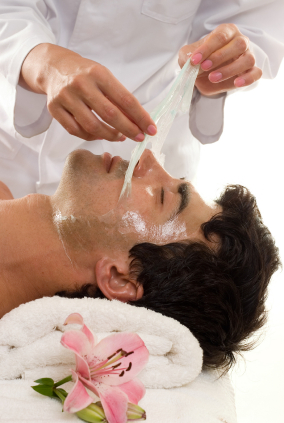What is Glycolic Acid?
Glycolic acid belongs to a group of natural chemicals called alpha-hydroxy acids. It is derived from sugar cane, sugar beets, pineapple, cantaloupe and grapes. It has varied uses ranging from industrial to cosmetic purposes, depending on its concentration.
It is the most popular alpha-hydroxy acid used as a chemical peel agent. Glycolic acid derived from sugar cane has the lowest molecular size which allows it to penetrate the skin faster, giving better results.
Glycolic acid is a water soluble cream or lotion of oil in water form is preferred in cosmetic applications.
Glycolic Peel
The use of glycolic acid as skin exfoliates is due to its high acidity but easy solubility. It goes under the damaged surface of the skin and loosens the bonds holding the dead skin cells, thereby allowing gradual exfoliation. This exposes the fresher layer that is softer, with more even texture.
Glycolic acid also has the ability to draw moisturizers into the newly exposed skin surface, which is why it usually comes with moisturizers to counteract its potential corrosive effects.
Ideally, the skin is primed a few weeks before the glycholic acid peeling procedure with the use of other AHAs, salicylic acid or retinoic acid to allow the absorption of the glycolic acid peel more rapidly.
Glycolic acid peels are available in lower concentrations for home use, while higher concentrations are employed only under the supervision of trained staff in a dermatological clinic or spa. Sessions are usually done once a week, lasting for about 6 weeks or depending on the severity of the condition being treated.
The Cosmetic Uses of Glycolic Peel
Acne-prone Skin
Acne is caused by blocked pores. The blockage could be due to overactive oil glands or caused by increased formation of keratin on the linings of the follicles leading to excessive build up of dead skin cells. Glycolic acid peels prevent clumping of the dead skin cells, thus cleansing the pores from impurities, preventing the formation of acne.
The ugly scars left by acne are likewise improved by a glycolic acid peel. It raises the bottom of deep, indented marks whereas hypertrophic, elevated scars are flattened, and closer to skin level on prolonged use. The darkly pigmented spots are eliminated with the renewal of the top layer of the skin called the epidermis, especially when glycolic acid is combined with lightening agents.
Aging Skin
As a person ages, the elasticity of the skin is diminished due to the lack of collagen and elastin. Glycolic acid stimulates these two which are found in the dermis, the lower layer of the skin. Being an anti-oxidant, it attaches itself to the free radicals that give the skin a dull, weary look. Glycolic acid peel eases out the appearance of wrinkles, fine lines and age spots.
Others
Due to the unique properties of glycolic acid, it is useful in treating other conditions such as psoriasis, icthyosis, seborrheic keratosis, follicular keratosis, sun-damaged skin, and ingrown hair.
What to Expect?
Glycolic acid peels done at a skin clinic uses higher concentration of the acid, around 70%, enabling quicker penetration of the agent to the inner layers of the skin and may cause a stinging sensation. Commercially prepared formulations usually have the pH adjusted to 3.5 to 4.5 and are combined with ammonium hydroxide to lessen the irritating effects to a sensitive skin. Either way, expect some stinging or burning sensation after application.
Shedding of the skin will be obvious as the skin may feel tight or dry, which will become more sensitive when you perspire. It could induce post-inflammatory hyper pigmentation in some. A certain degree of redness or blotching may be seen and a mild topical steroid cream may be prescribed to lessen the irritating effects.
The benefits can vary from one patient to another. It may show significant changes for some patients but not others. It takes time to see visible results, ranging from 3 to 6 months to even a year, so patience is required.
Glycolic is considered a superficial peel so it can only soften deep wrinkles but will not erase them. Raised scarring from acne can improve but not be totally eradicated. Laser and surgery are options to consider for these.
Photosensitivity has not been shown to be an adverse reaction, but patients undergoing the a glycolic acid peel must wear sun protection daily.

